skip ahead
*Disclaimer: this page includes affiliate links and I may receive a small commission at no additional cost to you. By using my links you’re merely supporting what I love to do: write this blog! I only recommend products/companies that I use myself.
Additionally, World Nomads provides travel insurance for travelers in over 100 countries. As an affiliate, I receive a fee when you get a quote from World Nomads using this link. I do not represent World Nomads. This is information only and not a recommendation to buy travel insurance.

"Discover how beautiful our country is and how wonderful our people are. Time to fall in love with the Philippines."
– Tony Meloto
Where I've Been
Palawn: Coron + El nido + Port Barton; Cebu: Cebu City + Moalboal; Siargao
My Experience
When wanderlust started really hitting me in the early days, photos of the Philippines were some of the first that I saved in my ‘someday’ folders. I stared at the crystal blue water and palm trees, longing to go there. In December 2019, I finally traveled to the Philippines! It was my last country after backpacking through 7, and my last month traveling out of 6 months. What a way to end a trip! The Philippines was everything I expected and more! The natural beauty of the country was jaw-dropping, I met some of my closest travel friends there, and connected with so many locals. In fact, as eager as I was to see my family after being away for so long, when it was time to leave I felt very sad to go. The Philippines felt like home in a lot of ways and returning is not a matter of if but when.


I loved every moment of my trip to the Philippines, but my most fond memories are in Siargao, exploring by motorbike and learning to surf and then in Manila, drinking beer and enjoying Filipino delicacies with some locals whom my friends and I met randomly!
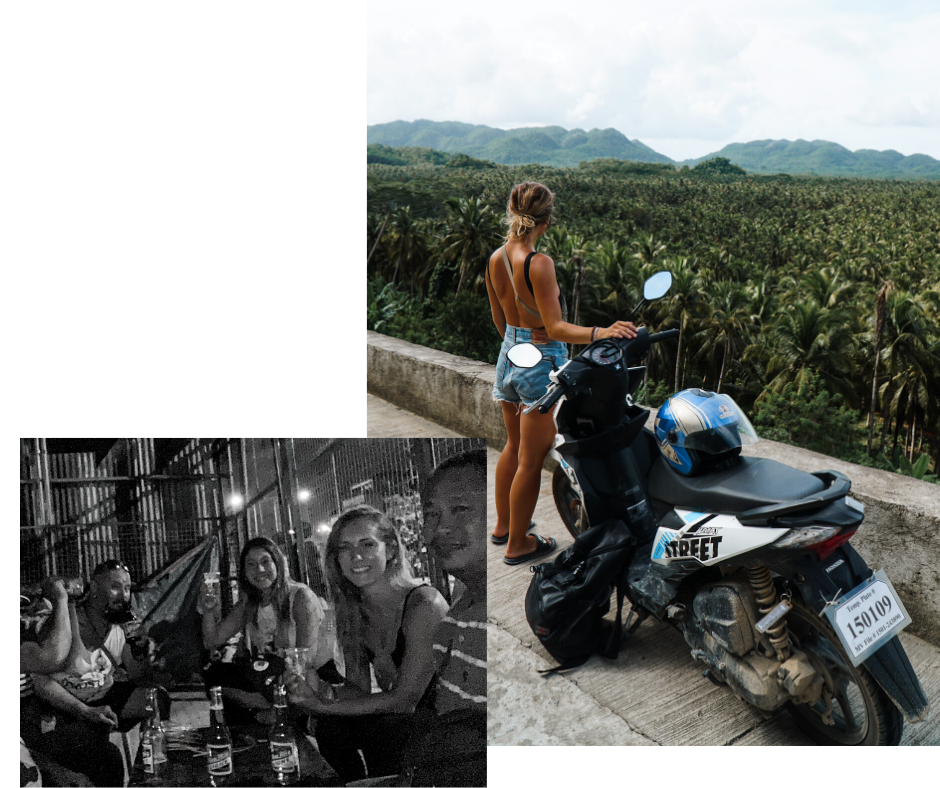


My Experience
When wanderlust started really hitting me in the early days, photos of the Philippines were some of the first that I saved in my ‘someday’ folders. I stared at the crystal blue water and palm trees, longing to go there. In December 2019, I finally traveled to the Philippines! It was my last country after backpacking through 7, and my last month traveling out of 6 months. What a way to end a trip! The Philippines was everything I expected and more! The natural beauty of the country was jaw-dropping, I met some of my closest travel friends there, and connected with so many locals. In fact, as eager as I was to see my family after being away for so long, when it was time to leave I felt very sad to go. The Philippines felt like home in a lot of ways and returning is not a matter of if but when.



I loved every moment of my trip to the Philippines, but my most fond memories are in Siargao, exploring by motorbike and learning to surf and then in Manila, drinking beer and enjoying Filipino delicacies with some locals whom my friends and I met randomly!



Planning your own visit?
Keep Reading
skip ahead
Know Before You Go
Language
Tagalog is the official language of the Philippines and many people speak English as a second language.
Currency
Philippine Peso/Piso
SYMBOL: ₱
ABBREVIATION: PHP
CONVERSION: The currency rate is subject to change but typically 1 PHP ~ 0.020 USD or 1 USD ~ 50 PHP
Plugs Used
The Philippines uses plug types A, B, and C with voltage 220V and frequency 60Hz; This voltage is higher than in the U.S.. As a standard rule of thumb, I suggest traveling with a plug adapter with a voltage converter, especially when using hot tool appliances such as a straightener.
Visa
U.S. citizens can travel without a visa to the Philippines if staying for less than 30 days. Visa information is subject to changes so double check here.
Health
To check health advisories and what vaccinations are needed to travel to the Philippines check the CDC website.
While I ate a ton of street food in the Philippines and never got sick, I would stay away from tap water and raw meat that’s been sitting out in the heat.
Safety
*Before traveling anywhere you should check the U.S. Government Travel Advisory for your own knowledge.
Overall, the southern region of the Philippines should be avoided, but the northern area is heavily traveled by tourists.
My top safety tips:
- Have a lock on your luggage and make sure your day bag has a zipper or is closed to avoid pick pockets.
- Don’t do drugs, party alone, or walk alone at night.
- Take photos of your motorbike when you rent it to avoid being scammed into paying for already existing damages.
- Wear a helmet and be careful if you do drive.
- Stay away from animals especially stray dogs.
- Practice good hygiene and don’t drink tap water.
- Get travel insurance!
Apps & Websites to Use
Must Haves on Your Packing List
- Rainjacket
- Sunscreen
- Bugspray
- Water shoes for snorkeling and waterfalls
- Waterproof Bag
- Underwater Camera
- First Aid Kit
- Swimsuit
- Loose clothes for the beach
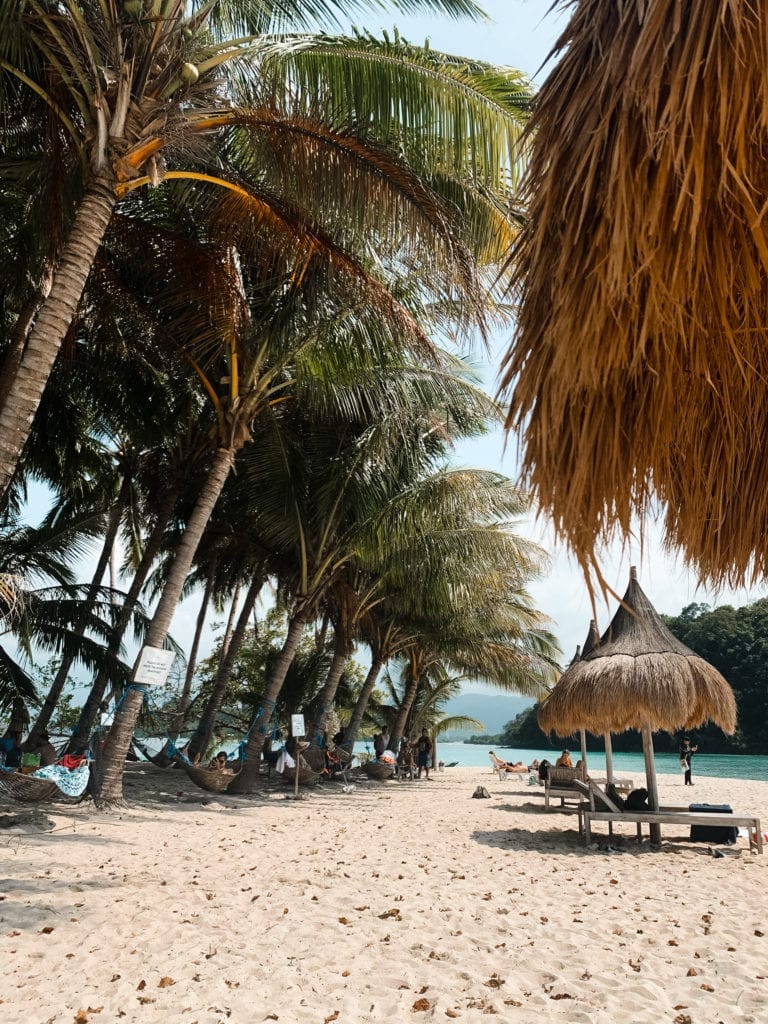

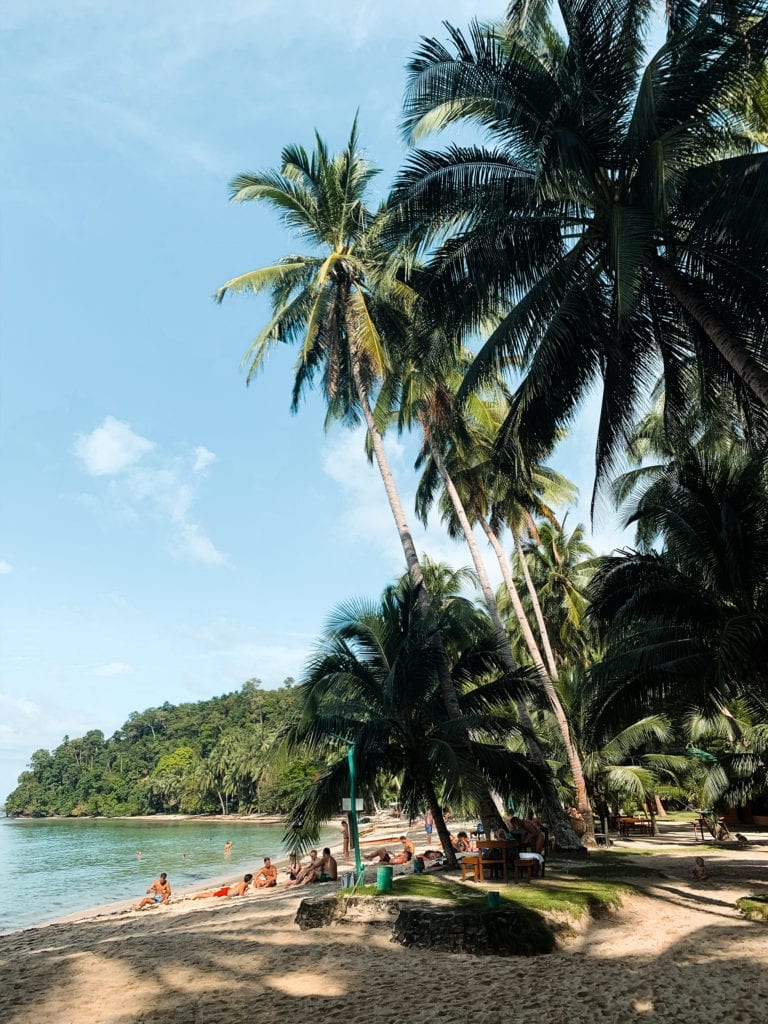

Best Time to Visit
January & February
The Philippines has two seasons: wet and dry, although how wet or how dry it is varies depending on which island you’re on. But typically dry season is from November – May. That being said, a lot of rainy weather can be pushed into those beginning months, (Nov-Dec) and humidity can be higher in those end months (April-May). Therefore the best time to visit the Philippines is January and February when the sun is shining, the air is cooler and there are many festivals.
However, it is still possible to travel during the more unpredictable months, just be sure to follow the weather advisories and be more flexible in your plans. I traveled to the Philippines in December for a month, and in Coron a typhoon came through canceling plans and causing my ferry to be canceled for 5 days. Then later in Siargao it down poured every single day. But I also had a lot of sunny days! All in all, Philippines weather can be unpredictable, but for this reason, I definitely would not advise traveling right in the middle of typhoon season (June – October).
international airports popular to fly into
Manila – Ninoy Aquino International Airport
Palawan – Puerto Princesa International Airport
Cebu – Mactan-Cebu International Airport
Transportation & Getting Around
The Philippines is made up of over 7,000 islands, so getting around takes a lot more planning and thought than other countries; there is also much more travel time added to your itinerary. Below are all the modes of transportation whether going between islands or traveling inland:
Flying
- A way to get in between islands
- Some airlines: Cebu pacific air and Philippine airlines
- I always booked on Google Flights
Ferries
- A way to travel in between islands, it takes longer but sometimes it is cheaper and better for the environment!
- Can book on Travel.2Go or Barkota
- If you plan to take a ferry from Manila to Coron, arrive on a Wednesday or Thursday because the only ferry for Coron leaves on Friday
Buses and Vans
- Transportation on islands
- Bus going up and down in Cebu – perfect way to get from Cebu City to Moalboal
- Vans are often available from hostels to get you to next destination (book through your accommodation or on 12Go.Asia)
Motorbike
- Independent transportation in an area
- Renting a motorbike is an option, prices differ island to island and can be from 300 – 600 PHP for a 125cc motorbike
Tricycles
- Works like jumping in a taxi, but it’s a motorbike with an attached carriage that can hold around 4-5 people.
Jeepney
- Public transportation, a sort of elongated jeep or bus
RideShare
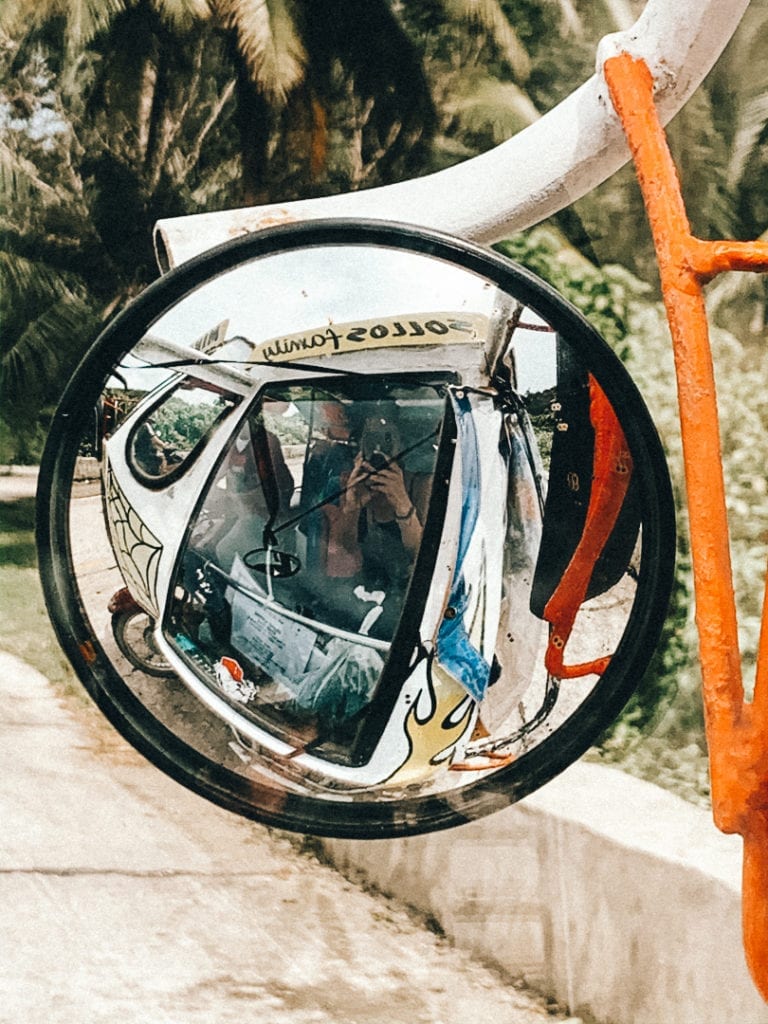

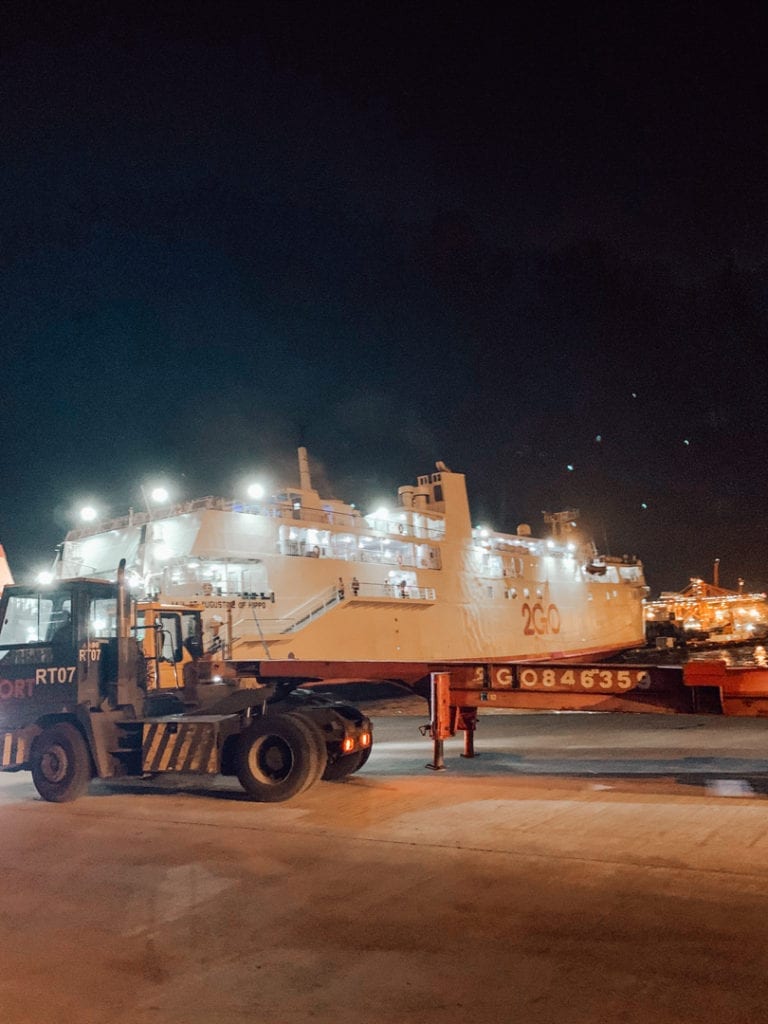

Typical Costs
Accommodation costs can vary in the Philippines depending on the area you’re staying but typically a hostel dorm bed is $5-15 USD per night, a private room in an hotel or Aibnb anywhere from $10 – $60 USD per night, and renting an entire villa or apartment $100-300 USD per night.
The cost of food varies depending on the area you’re in, the type of food you’re looking for, and how much you eat! Street food can vary from 10PHP – 150PHP ($0.20 – $3 USD) per meal. To sit down at a restaurant for a nice meal can be anywhere between 200PHP – 600PHP ($4 – 12 USD).
A flight in between islands can greatly vary depending on when you buy it, but will most likely be between $20 – $100 USD. A ferry between islands farther apart is typically around $20 USD, a shorter ride around $5 USD. The cost of renting a motorbike for a day is $6-9 USD. GRAB or Taxi ride varies but could be around $6 USD. Tricycles vary and you must haggle but could be from $1 – 4 USD.
In the Philippines I would budget at least $50 per day as a backpacker. Although the Philippines is cheap in terms of food and accommodation, a lot of money is spent on transportation and most activities done
(such as island tours and scuba diving) rack up your budget.
In cities like Manila and Cebu city, an international credit card could be used. However in the rest of the Philippines, cash is the main payment method. I suggest always having cash on you, and if you decide to go to a more remote/less populated place, to bring as much cash as you may need during your stay in case the one or two ATM’s there do not work.


